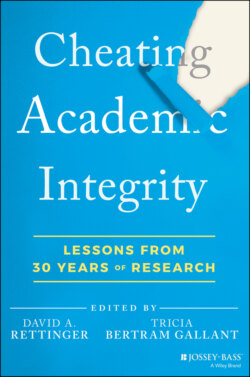Читать книгу Cheating Academic Integrity - Группа авторов - Страница 15
Curtis and Tremayne (2021)
ОглавлениеCurtis and Tremayne's (2021) studies were conducted at Western Sydney University, previously named the University of Western Sydney until 2015, and most participants were undergraduate students from this university, with some graduate students also surveyed. Students in these studies were presented with scenarios representing seven forms for plagiarism as defined by Walker (1998); see Table 2 (see also Maxwell et al., 2008).
Table 2 Types of plagiarism
| Type | Definition |
|---|---|
| Sham Paraphrasing | Material copied verbatim from text and source acknowledged in‐line but represented as paraphrased. |
| Illicit Paraphrasing | Material paraphrased from text without in‐line acknowledgement of source |
| Other Plagiarism | Material copied from another student's assignment with the knowledge of the other student |
| Verbatim Copying | Material copied verbatim from text without in‐line acknowledgement of the source |
| Recycling | Same assignment submitted more than once for different courses |
| Ghost Writing | Assignment written by a third party and represented as own work |
| Purloining | Assignment copied from another student's assignment or other person's papers without that person's knowledge |
Note: From Walker, J. (1998). ‘Student Plagiarism in Universities: What Are We Doing About It?’, Higher Education Research and Development, 17, p. 103. Copyright © HERDSA, reprinted by permission of Taylor and Francis Ltd.
Students were asked how frequently they had ever engaged in the behaviors described in each scenario using a 5‐point scale from 1 “never” through a range of frequencies to 5 “more than 7 times”. Students who had ever engaged in any of the plagiarism or cheating behaviors described in the scenarios were counted as having plagiarized/cheated to estimate the total prevalence of plagiarism/cheating in each survey.
